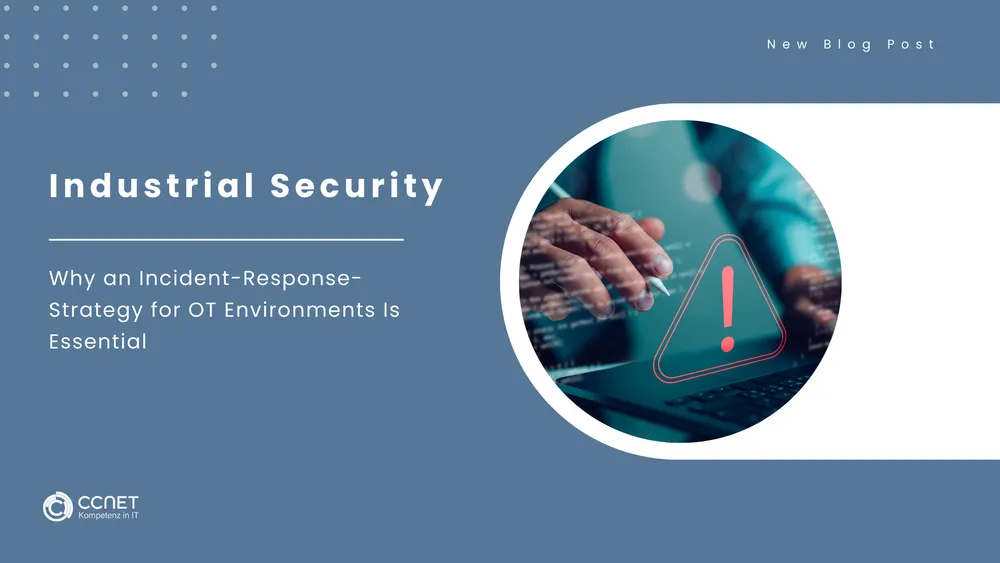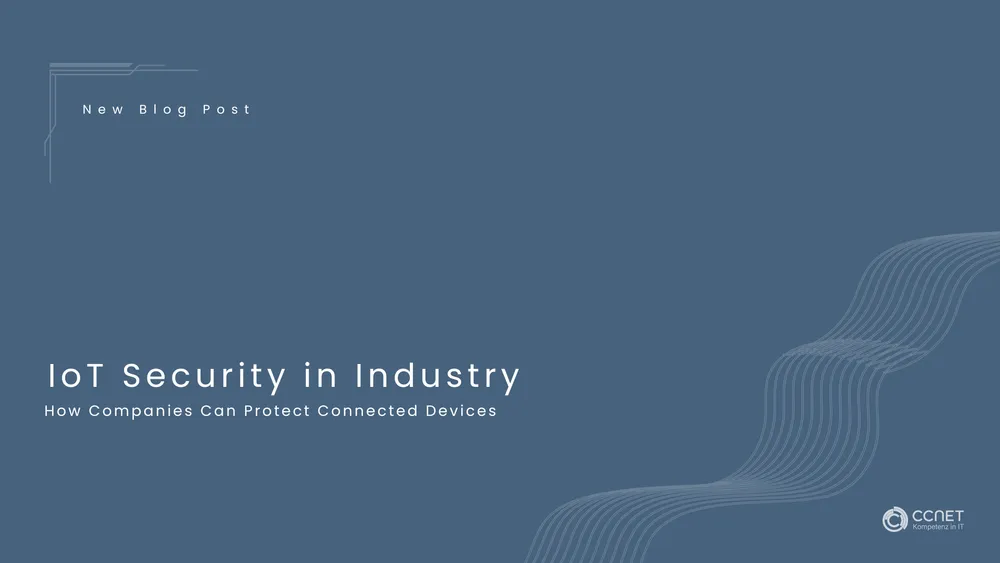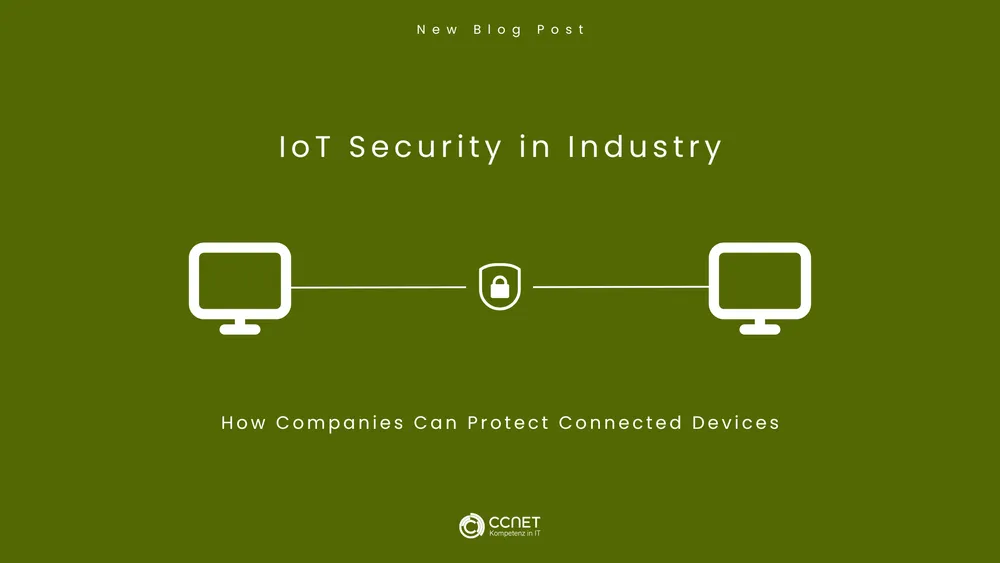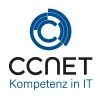
CCNet
May 14, 2025 • 3 min read
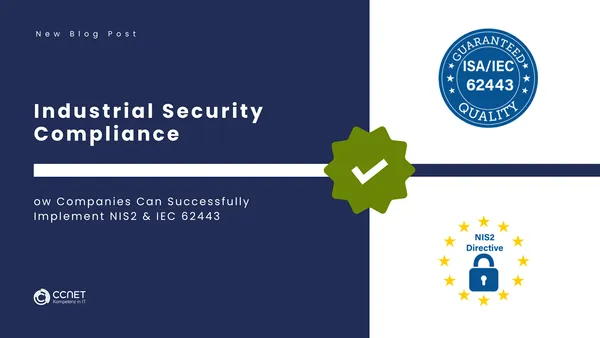
Industrial Security Compliance: How Companies Can Successfully Implement NIS2 & IEC 62443
Stricter security requirements for the industry – Are you prepared?
With the introduction of the NIS2 & IEC 62443 for Industrial Companies directive and the increasing importance of the IEC 62443 standard, industrial companies must rethink their cybersecurity strategy.
IT & OT security is no longer an option but a legal obligation.
Lack of security measures can lead to high fines and production downtime.
Attacks on unprotected production networks can paralyze entire companies.
Regulatory authorities require detailed proof of security measures.
But how can companies implement NIS2 & IEC 62443 for Industrial Companies efficiently without disrupting ongoing operations?
Further information can be found here: NIS2
NIS2 & IEC 62443 for Industrial Companies: What Do These Regulations Mean for Industry?
The NIS2 & IEC 62443 for Industrial Companies directive (Network and Information Security Directive 2) is an EU-wide regulation aimed at improving cybersecurity for critical and important companies, including industrial enterprises.
Affected companies must demonstrate their Industrial Security – otherwise, they risk heavy fines.
What Does NIS2 Specifically Require?
- Incident Response & risk management – Companies must detect and report security incidents quickly.
- Network Segmentation & access security – IT & OT networks must be protected with firewalls and IAM systems.
- Supply chain & third-party security – Suppliers must also meet high security standards.
- Regular audits & reporting – Companies must prove that their security measures are effective.
The IEC 62443 standard goes even further.
What Does IEC 62443 Regulate?
- Standardized security requirements for industrial automation systems.
- Detailed guidelines for securing OT networks & SCADA systems.
- Security measures for all stakeholders – manufacturers, integrators, and operators.
- Focus on risk management, access control, and patch management.
Industrial companies must comply with both NIS2 & IEC 62443 for Industrial Companies to meet legal requirements and security standards.
Challenges in Implementing NIS2 & IEC 62443 for Industrial Companies
- Lack of separation between IT & OT – IT & OT networks are often directly connected, allowing attacks to spread easily.
- Insufficient access controls – Many companies do not use Multi-Factor Authentication (MFA).
- Unclear responsibilities – Who is responsible for OT security? IT teams often lack expertise in industrial control systems.
- Lack of monitoring & Incident Response – Attacks are often detected too late.
- High effort for documentation & audits – Many companies do not know which proofs are required for NIS2 & IEC 62443 for Industrial Companies compliance.
The solution lies in a holistic security strategy.
How Industrial Companies Can Successfully Implement NIS2 & IEC 62443 for Industrial Companies
-
Implement Network Segmentation & Next-Gen Firewalls for IT & OT
- Separate IT & OT networks to contain attacks.
- Strictly regulate access rights between networks.
-
Introduce Identity & Access Management (IAM) with Multi-Factor Authentication (MFA) for Critical Systems
- Strict access controls for SCADA & PLC systems.
- Only authorized users can access industrial control systems.
-
Implement Security Information & Event Management (SIEM) for Real-Time Monitoring
- Security incidents must be detected & reported in real time.
- Anomaly detection prevents unauthorized activities in IT & OT systems.
-
Secure Supply Chains & Integrate Suppliers into the Security Strategy
- Third parties must also meet security standards.
- Conduct regular audits of suppliers & service providers.
-
Establish Automated Reporting & Audit Processes
- Security measures must be demonstrable & regularly reviewed.
- Automated audit reports simplify compliance documentation.
-
Conduct Regular Employee Training & Security Awareness Programs
- Employees are the biggest security risk – phishing & social engineering attacks remain the most common causes of security incidents.
- Security training should be updated regularly and adapted to the latest threats.
Conclusion: NIS2 & IEC 62443 for Industrial Companies Are Not a Barrier but an Opportunity for More Industrial Security
The industry must prepare for stricter cybersecurity regulations.
A holistic IT & OT security strategy is crucial for regulatory compliance.
Companies that take action now will not only gain a security advantage but also strengthen their market position.
Visit Us at SPS Parma and Learn How Industrial Companies Can Efficiently Implement **NIS2 &
